
Goodshoot/Goodshoot/Getty Images
The kingklip is one of a number of eel-like fishes harvested worldwide. It's native to the Southern Hemisphere and is an important commercial species in South Africa, where the name originates. They're harvested from deep offshore waters, ranging from a few hundred to 3,000 feet, where they grow up to 6 feet in length and 50 pounds in weight. Market size averages 10 pounds. You can cook it like most other varieties of white-fleshed fish.
About Kingklip
Kingklip is part of the cusk family, a group of elongated fishes with narrow eel-like bodies. However, eels' bodies are round in the cross-section while cusk and related species retain a flattened fish-like shape. Their unusual anatomy represents an advantage because their fillets are a uniform thickness throughout most of their length, unlike conventional fish which are thick near the head and thin gradually to the tail. Kingklip fillets are also boneless, which is convenient for both cooking and eating. The flesh varies from white to a delicate rose color, depending on the species.
Searing and Frying
Kingklip and its close relatives are similar to cod -- lean and with a pleasantly firm, flaky texture. Like cod, kingklip lends itself to pan-searing, frying and similar methods. Pan-searing browns the fish quickly in a very hot pan, dry or with only a small amount of oil, then finishes it in the oven. This method is widely used by chefs, who crust or glaze the kingklip to add flavor and texture. You can also bread it for deep or shallow frying, or simply pan-fry it in a small amount of clarified butter. Battered kingklip makes excellent fish and chips.
Steaming and Poaching
Like other white fish with a delicate flavor, some cooks prefer to poach or steam kingklip. This allows for more subtle, classical preparations, and also avoids adding unnecessary fat to the lean fish. Kingklip can be steamed in the Asian manner in a bamboo steamer, with a small bed of aromatic herbs and vegetables to gently flavor the fillets. Alternatively, wrap it in parchment paper to steam in its own juices with fresh herbs or a small amount of butter. You can poach it in fish broth, milk or water flavored with wine, spices and herbs.
Other Preparations
Kingklip can be grilled, but doesn't hold together well. It's best to use a fish-grilling basket to hold the fillets together and make them easier to turn. Marinate the fillets or brush them with oil to help keep them from sticking. Use kingklip in place of cod in your favorite baked fish or fish casserole recipe. Fish casserole is unfashionable, but you'll find many recipes in vintage cookbooks. Kingklip is also excellent when brined or smoked. Brined kingklip can be substituted for salt cod in most recipes, if you start at the point where the cod has been soaked and drained.
Related Articles

How to Cook Monchong Fish
Cooking Haddock
How to Cook a Turbot in the Oven
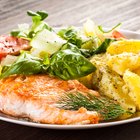
How to Cook a Turbot Fillet

How to Cook White Perch
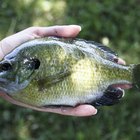
How to Cook Bluegill Fish

How Long Do You Cook Haddock Fillets in ...
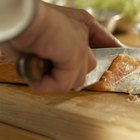
How to Pan Fry Grouper
How to Cook Chilean Sea Bass Cheeks
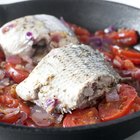
How to Cook Hog Fish
How to Cook Seasoned Keta Salmon

How to Bake Lingcod
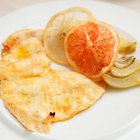
How to Cook Filet of Branzino
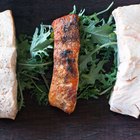
How to Cook Sea Trout
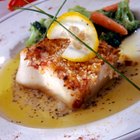
How to Pan Fry Sea Bass
How to Cook Whiting in the Oven

How to Pan Fry Tasty Perch Fillets

How to Cook Rockfish Fillets

How to Cook Moonfish

How to Cook Bluegill on the Grill
Writer Bio
Fred Decker is a trained chef and prolific freelance writer. In previous careers, he sold insurance and mutual funds, and was a longtime retailer. He was educated at Memorial University of Newfoundland and the Northern Alberta Institute of Technology. His articles have appeared on numerous home and garden sites including GoneOutdoors, TheNest and eHow.
Photo Credits
Goodshoot/Goodshoot/Getty Images